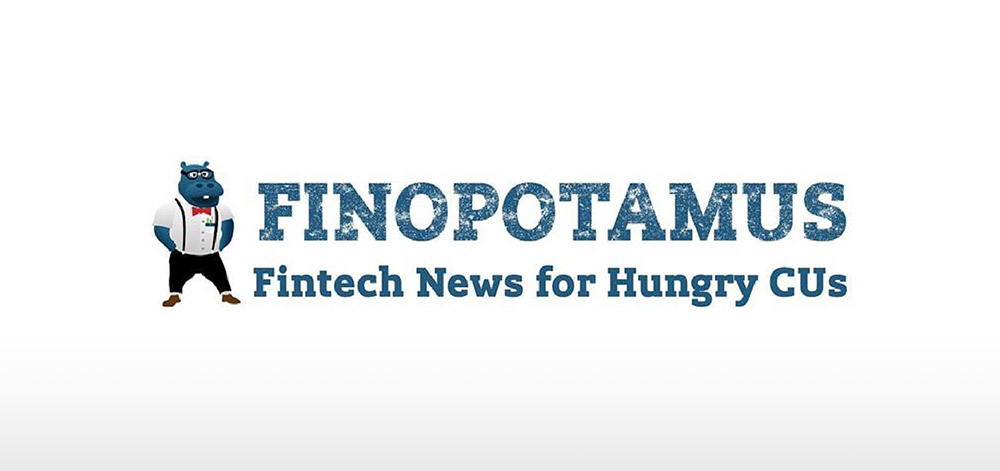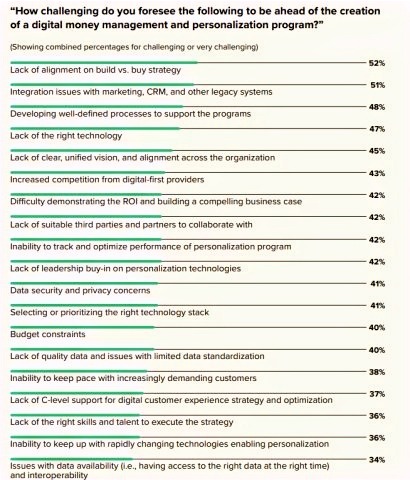February 19, 2023
Personalizing the Member Money Management Experience

Self-service technologies today comprise automated teller machines (ATMs), gas station pumps, automobiles, ticket purchases, check-ins at airports and checkouts at hotels, libraries and grocery stores, and many other use cases. Now, Personetics, which provides data-led customer engagement, believes credit unions could benefit from its Self-Driving Finance to support members and deepen relationships.
Personetics enables financial institutions to provide wealth management customers with guidance in handling finances – ranging from real-time insights to personalized recommendations and automated money management. “What we are doing is delivering insights and intelligence that help customers better manage their day-to-day banking and improve their financial wellness,” said Personetics President of Americas Jody Bhagat. Bhagat explained Personetics operates in 32 countries, and has more than 140 million end consumers on the platform and over 100 different financial institution clients, including a number of credit unions.
Providing more personalized financial wellness capabilities, or money management tools, presents an important opportunity for credit unions to build trust, drive member loyalty, and increase future profitability, he observed. “It reinforces the proposition that many credit unions have with their members: We are looking out for you, looking out for your wellbeing.”
Forrester Report on Money Management
To gain better insight about money management as an important ingredient in the digital banking environment, Personetics commissioned a Forrester Consulting thought leadership paper, Spotlight On North America: Banks And Credit Unions Need To Promote Customers’ Financial Well-Being, released in January 2023. To explore this topic, Forrester conducted an online survey with 528 manager-level-and-above digital business and strategy decision-makers in the consumer banking and credit union industries in North America and Europe. The Spotlight focuses on the 184 North American decision-makers.
Forrester found that financial institutions face a number of challenges in deploying digital money management capabilities, and need to evolve to successfully raise customers’ levels of financial capability. The report stated, “Most banks and credit unions in our survey provide digital money management tools to customers. However, customer adoption and engagement has remained disappointingly low: 88% say that less than half of their customers actively use these tools.”
However, “Existing money management tools fail to deliver tangible customer outcomes,” the report revealed. “North American credit unions and banks need to partner with the right technology partner to build advanced money management capabilities more quickly.”
The Forrester study suggested banks and credit unions lack an enterprise-wide financial wellbeing strategy with efforts often hindered by a lack of:
- Leadership and organizational alignment,
- An integration strategy involving product design and development processes,
- Strong capabilities to deliver personalized experiences, and
- Data insights needed to fuel those experiences.
Forrester also revealed that over the next 12 months many North American credit unions and banks plan to leverage digital money management tools and technologies to increase customer engagement and retention, and add revenue through upsell and cross-sell opportunities.

Not A One-Size-Fits-All Credit Union Solution
Bhagat said, “The primary challenge, and this is kind of universal across credit unions and banks, is that traditional personal financial management tools haven’t been widely adopted or embraced and haven’t delivered significant value to customers or to the institution.”
Bhagat said some credit unions have great control over their member’s digital experience, but some can only move as fast as their platform provider allows. “Money management requires a certain amount of horsepower and capability around understanding your member to deliver more tailored interactions.”
Then there is the matter of many current financial wellbeing instruments. Bhagat explained, “Many times, the data that is shared is more historical, more reactive. And as a result, you have seen relatively low adoption.”
Nevertheless, Bhagat pointed out there is an opportunity now where money management tools allow the credit union more member interactivity by actually anticipating needs and bringing attention to financial situations that need attention. Bhagat added, “The key element there is that it reinforces the proposition that many credit unions have with their members. The promise, which is: We are looking out for you, looking out for your wellbeing. That is why money management tools in particular are so important for the credit union industry.”
Taking Personetics for a Self-Drive Test
“This landscape of data-driven personalization, there’s a lot of maturity left to go in this,” said Bhagat. He explained Personetics has made significant advancements that “rely on a deeper understanding of members’ needs, a more intelligent set of interactions for the member.”
The goal is to remove a lot of the load placed on members when it comes to financial items such as budgeting and savings. “That cognitive load and burden should be taken on by the credit union. That is the kind of intelligence that is available today for the credit union industry and they should be capitalizing on it,” Bhagat emphasized. He added, “Credit unions have to compete with firms that have literally hundreds of millions of dollars to invest in digital technologies. And yet credit unions still need to distinguish themselves on the member experience.”
Bhagat advised there is an element of strategy involved in tapping into an ecosystem that delivers the right kind of data, the right kind of tools and processes that members really value. This includes helping them budget better based on actual transaction behaviors, and dealing with difficult financial situations by recommending solutions.
Bhagat said the system prescribes an action in conjunction with the credit union like setting up an emergency savings account to cover six months of expenses. “When a member sees that kind of interaction, they really think, The credit union is actually looking out for me. Now, it may not feel great to know that I have got a cashflow issue coming 10 days from now, but I am pretty happy somebody is helping me anticipate it rather than giving me a penalty fee.”
Credit Unions Use Self-Driving Finance
Personetics delivers its Self-Driving Finance system to several credit unions including the $5.09 billion North Chesterfield, Va.-based Virginia Credit Union (VACU); and the $3.6 billion San Diego-based California Coast Credit Union (Cal Coast).
Cal Coast, for example, invested in a digital architecture that can create a single view of the member. The credit union’s strategic technology plan includes personalized insights and advice powered by Personetics.
“The credit union market in California is very unique, and that plays into the approach that we are taking in terms of technology, personalization, and membership,” said Todd Lane, CEO of California Coast Credit Union, on a Personetics podcast. “We have to compete with the big guys. And the only way to do that is to own the member experience. Most smaller financial institutions, community banks, and credit unions don’t own that member experience today. They rely exclusively on others – and we think that’s a mistake.”
Lane explained the focus at Cal Coast now is on using data, artificial intelligence (AI), and partnerships to create a simpler customer experience and essentially to automate the kind of personal attention given through the Member Care Unit.
The Future of Personal Money Management
“What’s exciting now about the advancements in data and analytics, is that (credit unions) can deliver personalized insights and interactions and advice that help members better manage their day-to-day banking,” said Bhagat. He added, the Personetics platform has hundreds of insights, across a number of different categories, all of which help members manage their finances. These include budgeting, savings, and keeping track of subscriptions, and higher than normal or duplicate bills.
Bhagat said Personetics’ multi-tiered model covers the largest banks with the most significant scale and size; and mid-sized institutions such as credit unions and banks, from around $8 billion to $50 billion in assets, with a more stripped-down version. Bhagat noted, this is a much easier lift, and “much more turnkey implementation done inside of 12 weeks.” For smaller institutions, Personetics has a partnership strategy with some of the big platform providers, such as FIS.
The use of technology and data-driven personalization, according to Bhagat, “fits very well around (the credit union) mission of simplifying members’ lives and banking experience and also increasing prosperity.” Additionally, “The beauty about this is that even though it actually takes a fairly sophisticated amount of intelligence in terms of analytics and machine learning models, we do not believe this should be relegated to the biggest institutions that have armies of data scientists. These are capabilities that can be delivered to credit unions of all sizes.”
Want To See How Cognitive Banking and AI Can Transform Customer Engagement?
Request a Demo Now
Latest Posts

How to Maximize SaaS Value and Future-Proof Your Platform

See What’s Sizzling in our Summer Product Release Highlights

Truist's Performance Marketing Journey: From Merger Challenges to Million-Dollar Results

How Asia Pacific Banks Are Redefining AI-Driven Engagement

How iBank and Personetics are Transforming Personal Finance in Japan

Beyond Transactions: How Synovus is Creating Deeper Digital Engagement at Scale









